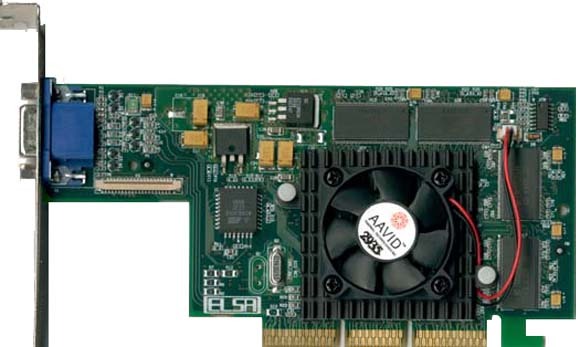Professional Affair: OpenGL Graphics Cards Compete
Elsa Gloria II With Nvidia's Quadro-Chip

If you compare this 64 MByte card with the surfboards of the other manufacturers, it seems quite small. However, this impression is deceptive, as you will see in the benchmarks. Elsa does not have its own chip fab but buys them from other manufacturers. Thus the Gloria II uses a customized version of the GeForce graphic chip named Quadro by Nvidia.
While GeForce offers a chip clock frequency of 120 MHz, the Quadro comes with 135 MHz. Therefore the fill rate of the QuadEngine reaches a maximum of 540 MPixel/s instead of the GeForce's 480 MPixel/s. Consequently the polygon rate also increases from 15 to 17 MPolys/s.
Similar to the GeForce, the Quadro possesses a 350 MHz Ramdac. It allows True-Color resolutions of 2048 x 1536 at ergonomic refresh rates of 85 Hz. A powerful computing monster works under Quadro's hood. It is the only card in the test that integrates the geometry engine - also know as T&L unit - and the rasterizer on one graphics chip. 3DLabs on the other hand uses a multi-chip solution to achieve the same effect. The card also comes with special drivers for 3D Studio Max and Autocad that were developed by Elsa. The standard drivers are from Elsa as well. The latter gave us a few headaches. More about that soon.
Stay On the Cutting Edge: Get the Tom's Hardware Newsletter
Get Tom's Hardware's best news and in-depth reviews, straight to your inbox.
Current page: Elsa Gloria II With Nvidia's Quadro-Chip
Prev Page E & S Lightning 1200 - Display Characteristics Next Page Elsa Gloria II - Display Characteristics